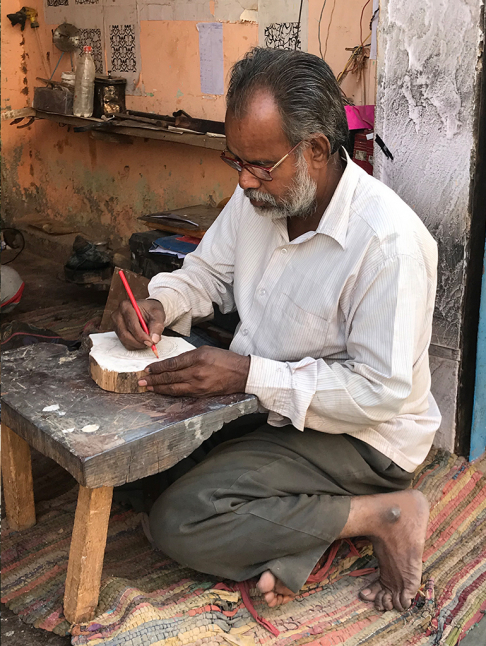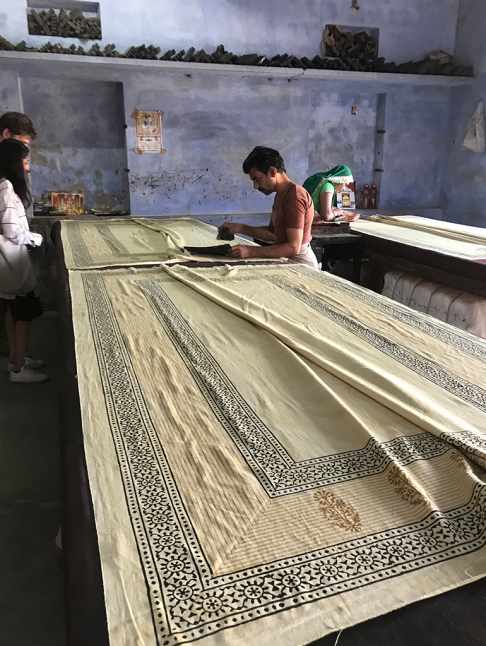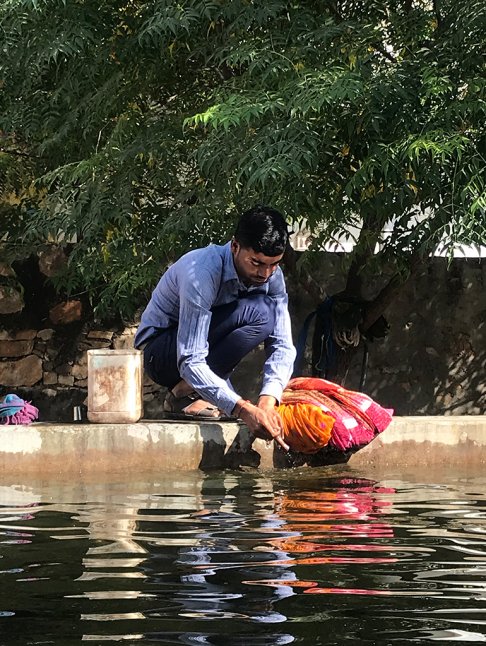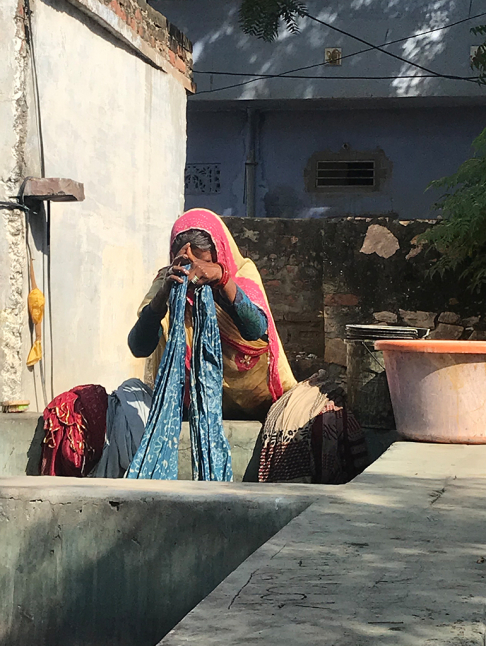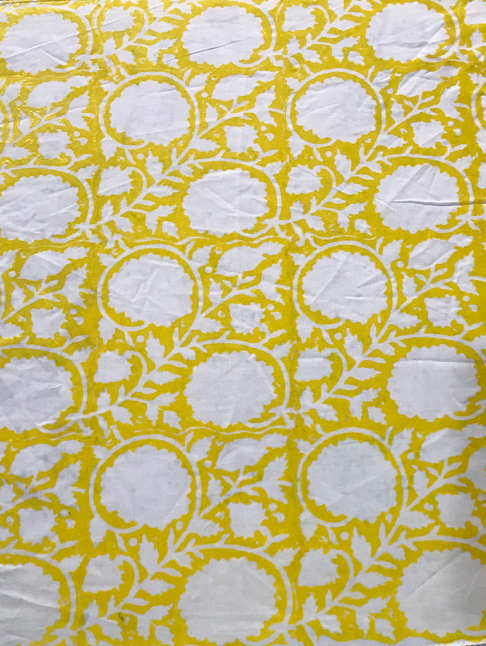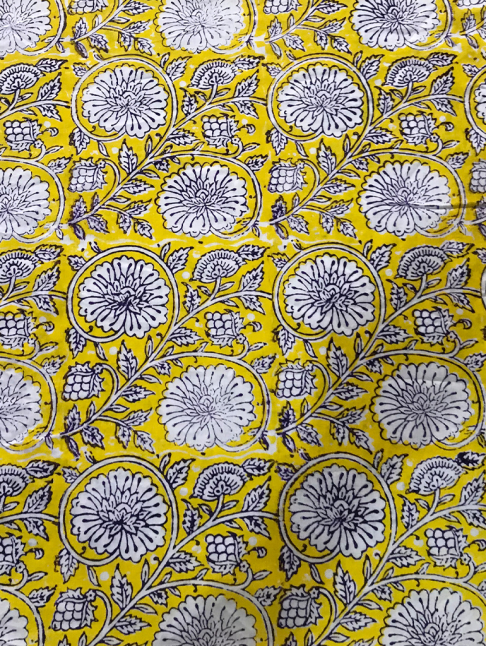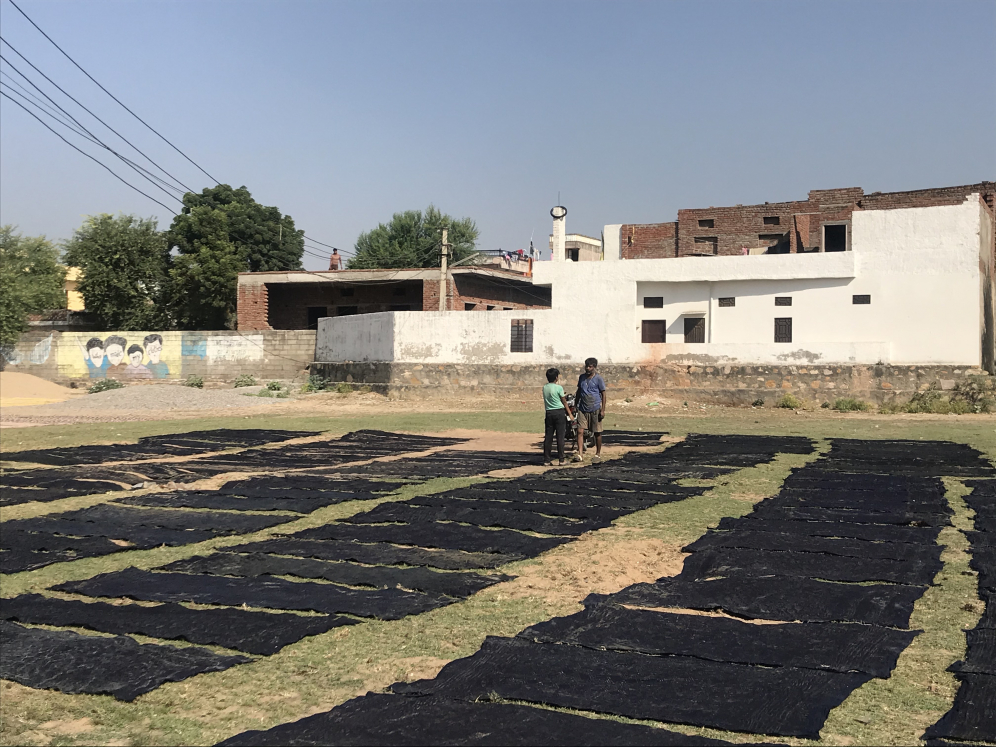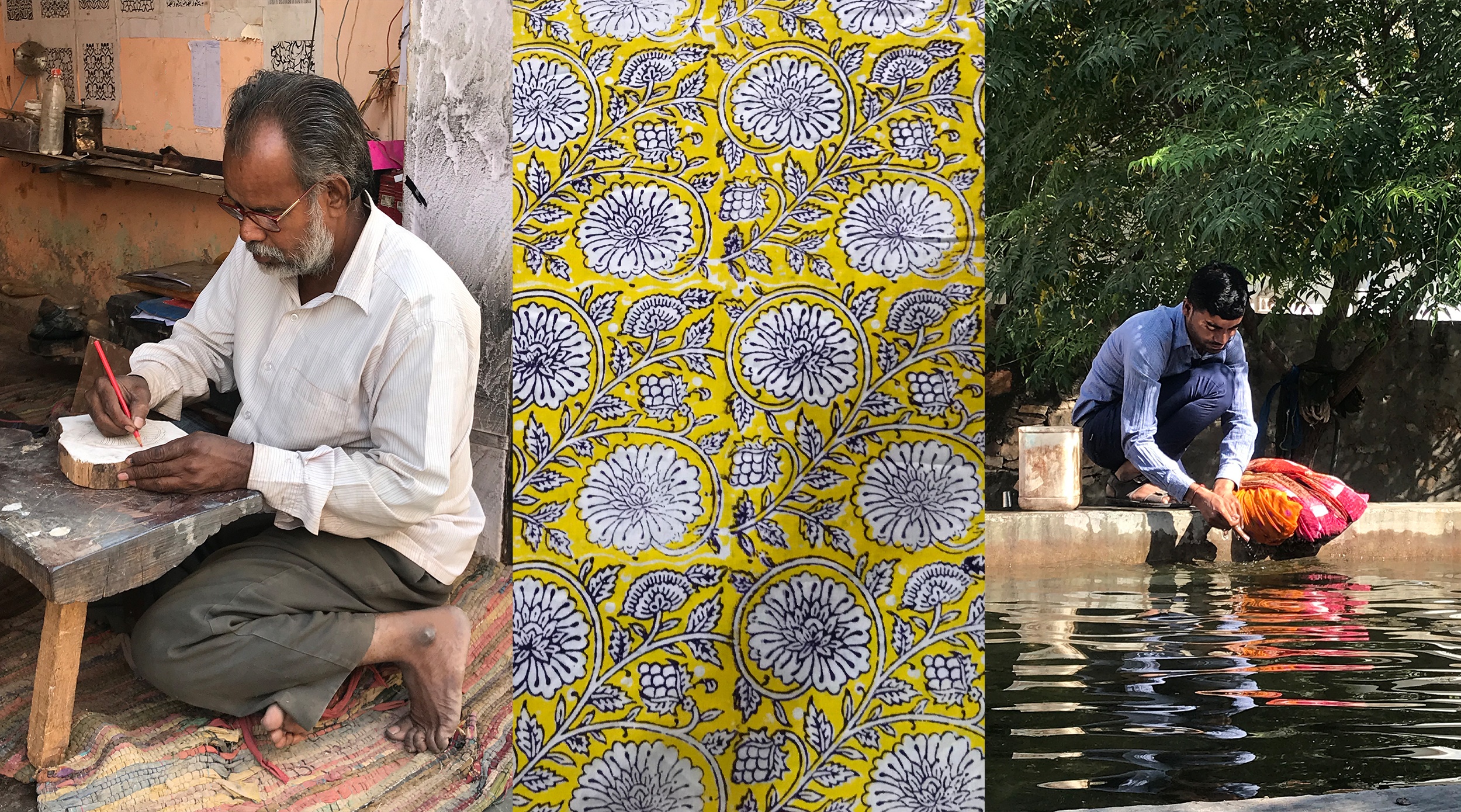
Out & About – Block Printing in Rajasthan
This week, one of our Design Team visited Jaipur to learn more about block printing. The traditional process of hand block printing on textiles with rich colours has been practised in Rajasthan for around 500 years. Block printing was introduced to the Jaipur region by the Chipa community, located in the village of Bagru, an area famous for vegetable dyes and mud resist block prints. The art of block printing has been passed down for generations within families and communities.
A print starts with the design, drawn on paper and carved by hand onto the wooden blocks which are approximately 18-24cm. The physical block is the design for a single repeat, which is then stamped in rows across the fabric. Each element of the design is carved into a separate block. Block carving in itself is a precise art requiring years of apprenticeship and done entirely by hand.
Each colour pattern is stamped individually onto the fabric; the process takes time and skill, as the pattern must be stamped repeatedly across the fabric, colour by colour. The subtle gaps and overlaps are a beautiful reminder of the handwork and give block printing its iconic look. Block printing villages are known for their rhythmic ‘knocking’ sound of the block printer hitting the wood block to secure the pattern. The sound echoes through the village and reminds us of the artisans at work.
The original Bagru style of printing traditionally uses floral, leaf and geometric motifs on cottons and silks. However in recent decades, designers from the west have worked closely with these local artisans to create Indo-western patterns which are inspired by art and nature.
Block printing has provided an essential source of income to many village families. Traditionally it was the men who created block prints but in recent years there has been a significant rise in women printers, providing an income for the whole family.
The skill of these talented artisans and the involvement of the community; men, women and children taking pride in their beautiful hand-printed textiles, is keeping the tradition alive while also adapting to global tastes.


